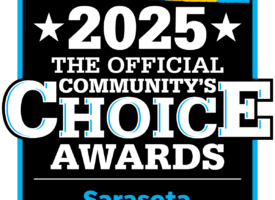Most older Americans qualify for Medicare, but that is not the only game in town. For eligible seniors in certain states, there is a more comprehensive program that meets an even wider range of needs: The Programs of All-Inclusive Care for the Elderly (PACE). PACE is a federal program that provides wraparound medical and social services for qualified frail, elderly people — an approach that can help these individuals stay out of nursing homes while receiving the varied services they need in a community setting.
PACE is only available in a handful of states currently, but more states are taking a look at the program and its potential benefits. If your healthcare organization is not familiar with the program yet, here is your introduction.
An Inclusive Service Model
PACE participants enjoy coordinated care provided by an interdisciplinary team of social and medical professionals. A holistic approach to meeting vulnerable seniors’ complex needs allows them to find the diverse support they need through their care team so they can remain in the community.
PACE benefits include the entire range of Medicare and Medicaid covered services, from adult day care, dentistry and primary care to meals, transportation, social services and much more. Each provider team includes:
- Dietician
- Driver
- Home care liaison
- Nurse
- Occupational therapist
- PACE center supervisor
- Personal care attendants
- Physical therapist
- Primary care physician
- Recreational therapist or activity coordinator
- Social worker
Other professionals and paraprofessionals may also be part of the care team. Members meet often (typically daily), working together to develop individual care plans, deliver appropriate services and monitor each participant.
PACE Eligibility Requirements
Most PACE participants are eligible for Medicare as well as Medicaid, although Medicaid eligibility is not mandatory. Participants must be at least 55 years of age and reside within the defined service area of a PACE organization, with needs that qualify them for nursing home care. Given the proper support, however, participants must be able to safely live in the community.
Enrollment is voluntary, and once enrolled, participants can always choose to leave the program. PACE remains the only source of services until a participant disenrolls, loses eligibility or passes away.
Funding and Reporting
PACE relies on capped program financing rather than the standard Medicare and Medicaid per-service reimbursement model. This makes it possible for enrollees to access the full range of support they may need to remain living in the community, including services that may not be reimbursable under traditional Medicare or Medicaid.
Providers get monthly capitation payments based on the number of program enrollees they serve. Participants pay monthly premiums set at the same level as the capitation payments. They are not required to pay deductibles, coinsurance or cost-sharing of any kind beyond the monthly premiums. Participants who are eligible for Medicaid are exempt from monthly premiums and all other forms of cost-sharing.
As a program under Medicare, PACE is subject to CMS reporting. PACE organizations must take part in ongoing PACE quality data monitoring and reporting to ensure quality of care and continuously monitor health outcomes.
Program Administration
PACE organizations include public entities as well as nonprofit organizations. Eligibility requirements for organizations to administer the program include:
- Defined service delivery area
- Location for providing adult day services
- Documentation of fiscal soundness
- Protocols to prevent and detect conflict of interest
- A board of governors, including representatives from the community
- Ability to provide all PACE-eligible services at the needed frequency and duration
CMS provides resources to help healthcare organizations learn how to apply as a PACE organization and navigate the Health Plan Management System (HPMS), including these two instructional videos:
- Programs of All-Inclusive Care for the Elderly (PACE ) Application Requirements/Process
- HPMS PACE Application Training
PACE can make a big difference in the quality of life for frail seniors while taking the pressure off of overstretched nursing homes and residential care facilities. If your healthcare organization is interested in exploring the possibility of becoming a PACE organization, start by reviewing the PACE Manual.
We encourage you to learn more about this patient-centric and cost-effective Medicare service model. Count on Mauldin & Jenkins’ experienced healthcare advisors for answers and guidance to support your organization throughout your service journey.



